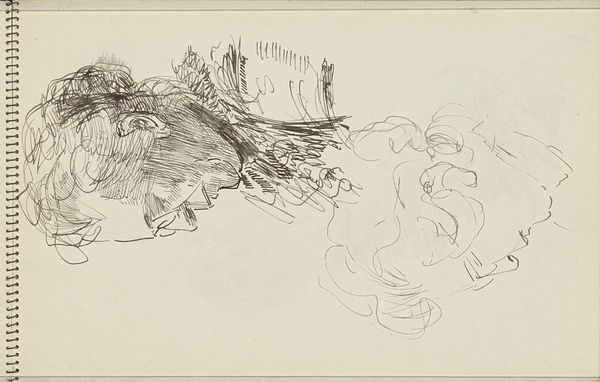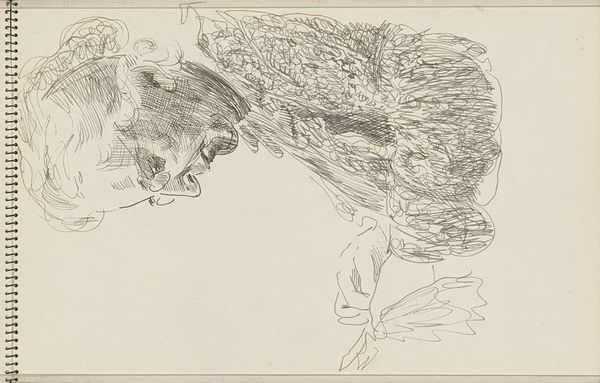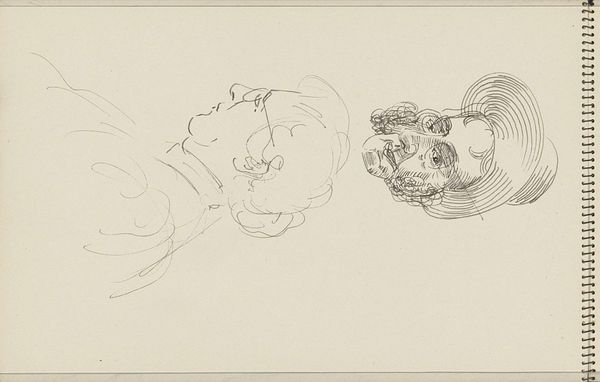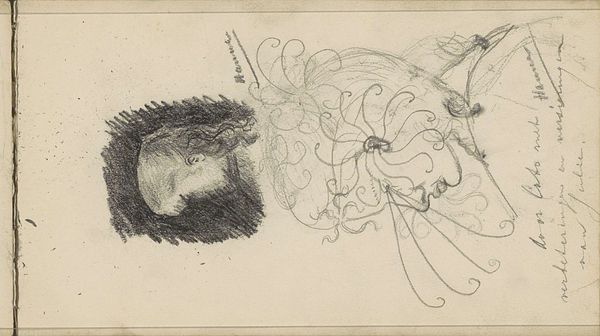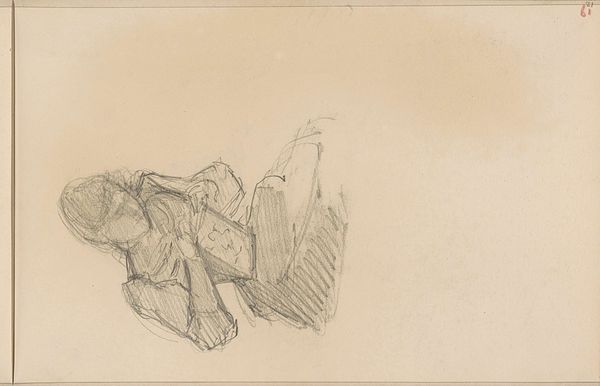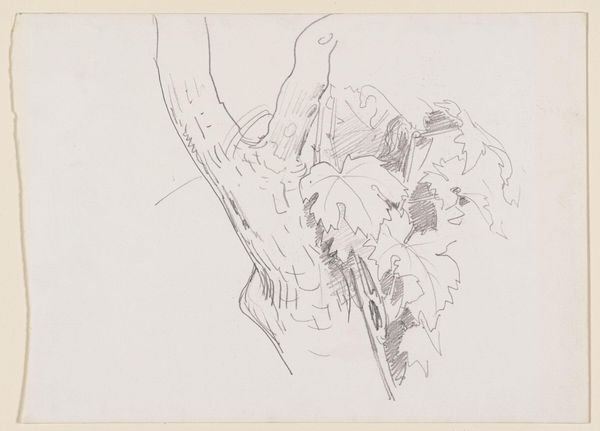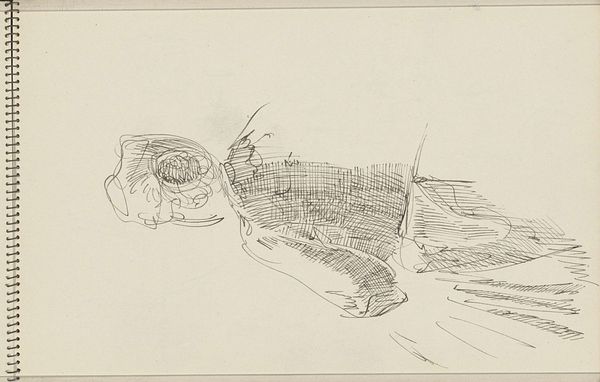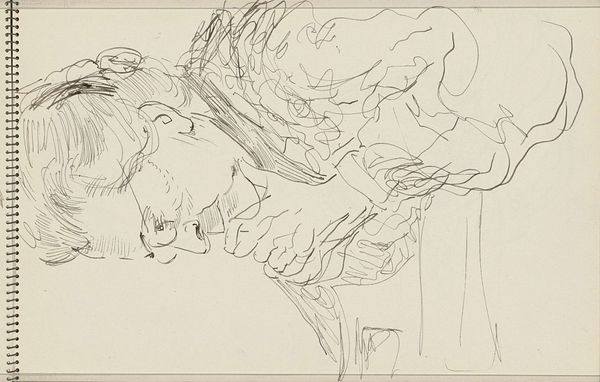
drawing, pencil
#
portrait
#
drawing
#
amateur sketch
#
light pencil work
#
pen sketch
#
pencil sketch
#
personal sketchbook
#
idea generation sketch
#
sketchwork
#
sketch
#
pen-ink sketch
#
pencil
#
sketchbook drawing
#
modernism
#
initial sketch
Copyright: Rijks Museum: Open Domain
Curator: Looking at this sketch, what's your initial impression? Editor: It's so energetic, isn't it? There's a real sense of movement in the lines. They’re quite dense, almost chaotic. The artist uses hatching to define the form, but it’s loose. It has a quality of incompleteness, almost like the sketch isn’t quite finished. Curator: Indeed. We are looking at a pencil drawing by Carel Adolph Lion Cachet. This study, which goes by the title "Handwerkende Joanna Lion Cachet-Cordes," dates from around 1935 to 1940, and it offers us insight into the artist’s process. Editor: Tell me more about it. Who is this woman? What's she doing? What does this quick sketch communicate to the audience? Curator: Cachet-Cordes was the artist's mother. Considering the time it was made, it might offer a subtle commentary on domesticity and women’s roles, especially given Cachet’s social circles in the Dutch artistic scene. The rapid strokes speak to a capturing of everyday moments, but potentially of stifled female potential within a confined, domestic sphere. The frantic hatching seems almost desperate when read this way. Editor: I see what you mean, but I also find that energy exciting on its own merit. Looking at it formalistically, the hatching actually works to define a very particular play of light and shadow. Note the ways the lines almost caress the woman’s profile. The formal language seems much more intimate and gentle than the implications you are drawing from it. Curator: But isn't the historical and social context always influencing even our purely aesthetic interpretations? A formalist approach sometimes risks stripping the art from those crucial layers of meaning. How can you appreciate that hatching fully without considering the cultural climate in which it was made? Editor: The act of looking is about seeing. We read from those lines an effort at capturing light and volume, even with simple pencil strokes. Surely, this directness communicates most powerfully the nature of artistic gesture, as seen outside social issues. Curator: I disagree—but I admire the economy of Cachet’s lines, capturing essence. Thank you. Editor: Likewise. The composition makes one wonder what the artist was seeing, and how the shapes took place in time. Thanks!
Comments
No comments
Be the first to comment and join the conversation on the ultimate creative platform.
